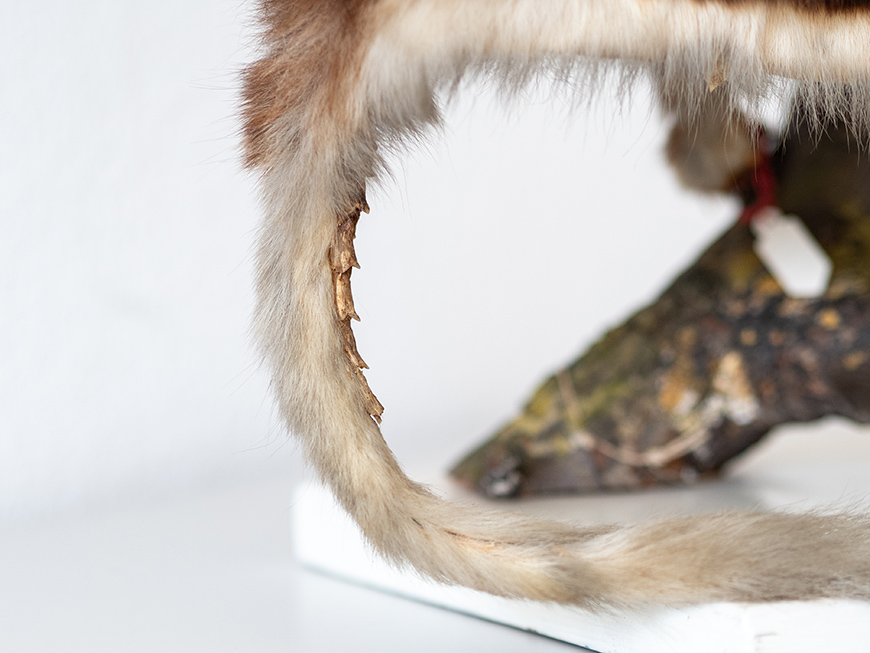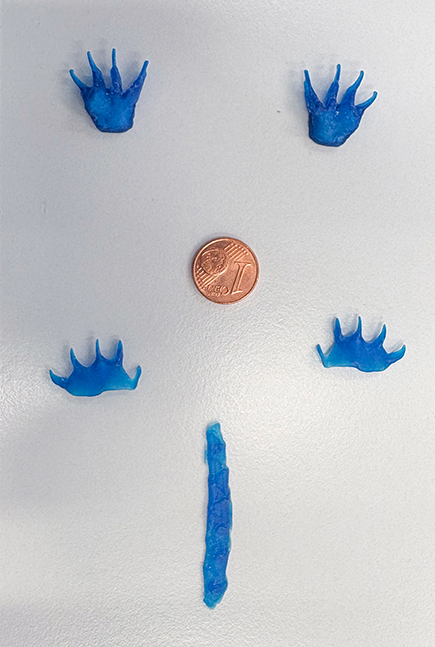Rare flying squirrel species inspires robotics
Safely navigating treetops thanks to a scaly tail
African scaly-tailed squirrels use their scaled tails to safely move across the smooth bark of trees in their native rainforest habitats. Researchers from Empa, the Swiss Federal Laboratories for Materials Science and Technology, and the Max Planck Institute for Intelligent Systems have for the first time investigated the physics of these thorn-covered scales located on the underside of the squirrel tails through mathematical and physical models. Their findings could eventually enable agile and energy-efficient bionic robots and drones.

Scaly-tailed squirrels are among the least studied mammals. These nocturnal rodents, which range in body length from six to 45 centimeters depending on the species, inhabit the rainforests of West Africa. Using skin membranes between their limbs, they glide between treetops – similar to flying squirrels, although the two are not closely related.
Scaly-tailed squirrels get their name from a unique bodily structure: thorn-covered scales on the underside of their tails. Biologists hypothesize that these scales help the squirrels move and grip onto tree bark, but exactly how the scales function had not been previously investigated. Researchers from Empa's Soft Kinetic group, formerly situated at the Max Planck Institute for Intelligent Systems, have now published the first study on this topic in the interdisciplinary journal of the Royal Society, Interface.
Subcaudal spines provide grip
For their study, researchers led by Ardian Jusufi borrowed, measured, and 3D-scanned specimens of the rare scaly-tailed squirrels from natural history museum collections. Based on this data, they demonstrated how tail spines help squirrels securely, stably, and efficiently maintain their position even on smooth tree bark.

The researchers used both analytical models and physical replicas – artificial “squirrels” equipped with 3D-printed tail scales and claws. “Animal locomotion in irregular terrain is complex. Simulations alone aren’t sufficient to understand it,” explains Jusufi, who is heading the Soft Kinetic research group at Empa. “That’s why we develop moving physical models for experimental validation.” Jusufi has previously discovered landing behaviors of geckos in the rainforest using soft robots, revealing the physical basis for animals’ tail reflexes.
With scaly-tailed squirrels, the team initially started with a static model. Next, Jusufi’s group aims to incorporate movement to better understand how the scaly tail assists squirrels during landing. “Since injury has been observed in arboreal specialists, we know that unexpected events and locomotion failure can occur,” says Jusufi. “If a squirrel approaches a tree but suddenly notices a predator, it must swiftly redirect to another tree mid-flight. We suspect the scaly tail helps absorb the energy of such emergency landings, preventing falls.” In the long run, Jusufi plans field studies to observe and film the animals landing in their natural environment, similar to his field research on geckos – a crucial element in modeling their movement.
Inspired by nature

Understanding the physics behind animal locomotion also benefits humans. Insights from this study could one day inform robotics. Small, mobile, and autonomous robots and drones are highly sought after in fields such as agriculture, environmental monitoring, and disaster relief. To design robots capable of moving safely and efficiently through complex, unpredictable environments – such as treetops – robotics researchers can draw inspiration from animals, adopting morphological structures and behaviors honed through millions of years of evolution. This discipline is known as Biomimetics.
But before something can be replicated, it must first be understood in depth. “Animal locomotion involves a complex interplay of processes, many of which are poorly understood,” Jusufi notes. “Particularly, the role of the tail remains understudied in many species and locomotor modes.” The broader application of his fundamental research is an enhanced understanding of locomotor systems. Animated physical models of animals can serve as tools to simulate movements interacting with complex terrains, thus significantly reducing the need for animal experimentation.
Prof. Dr. Ardian Jusufi
Empa, Soft Kinetic
Phone +41 58 765 39 47
Dr. Andrew K. Schulz
Max Planck Institute for Intelligent Systems
AK Schulz, M Chellapurath, PC Khandelwal, SR Rezaei, S Merker, A Jusufi: Scaly-tail organ enhances static stability during Pel’s scaly-tailed flying squirrels’ arboreal locomotion; Journal of the Royal Society Interface (2025); doi: 10.1098/rsif.2024.0937
-
Share






